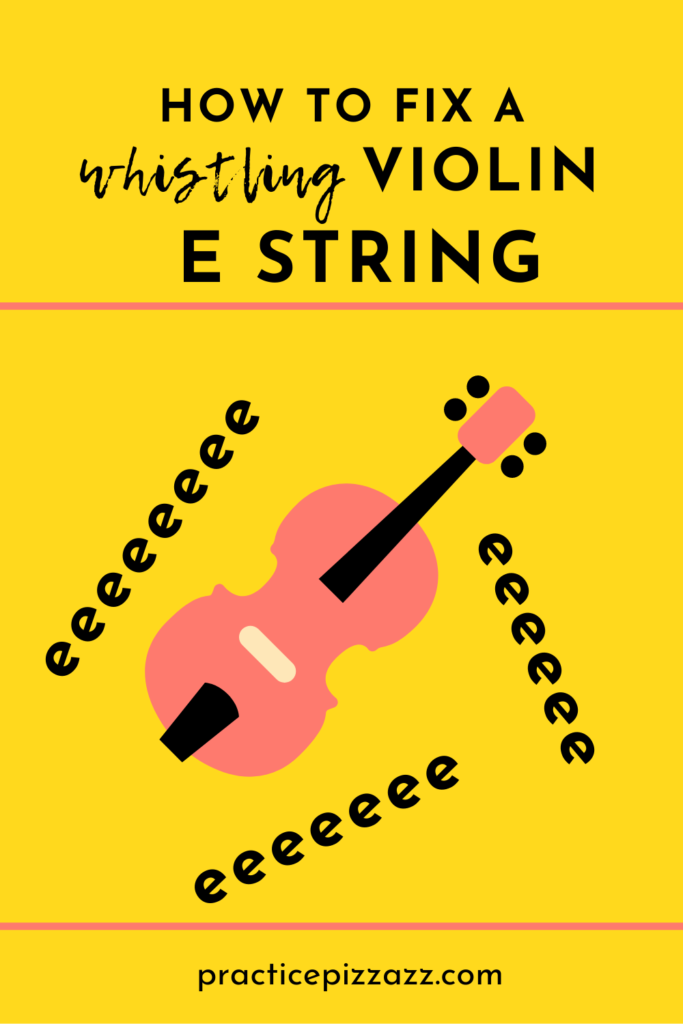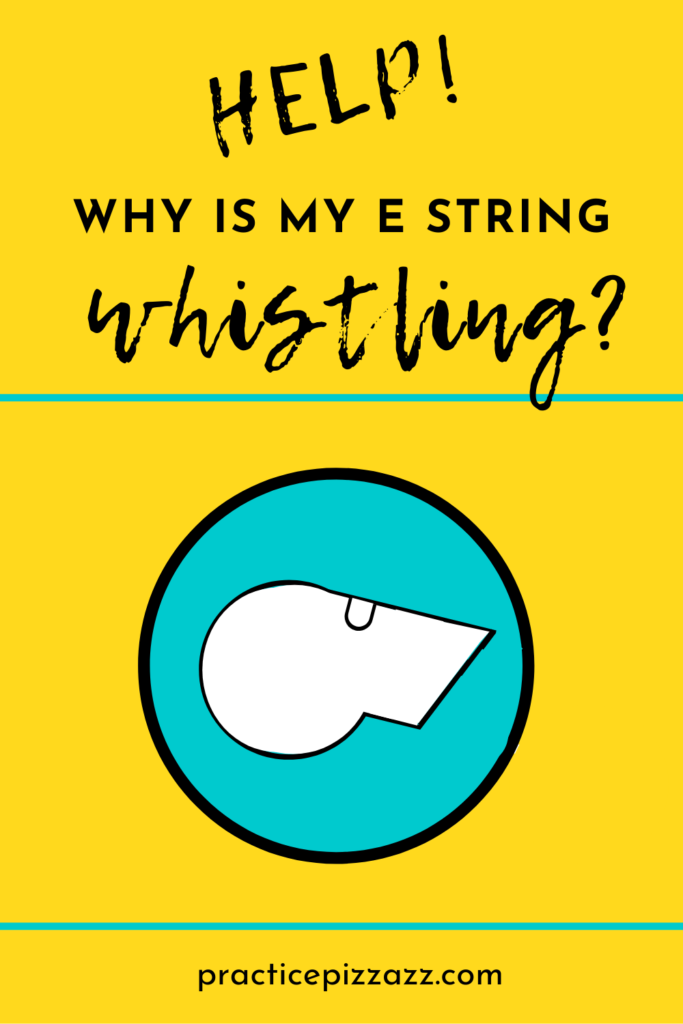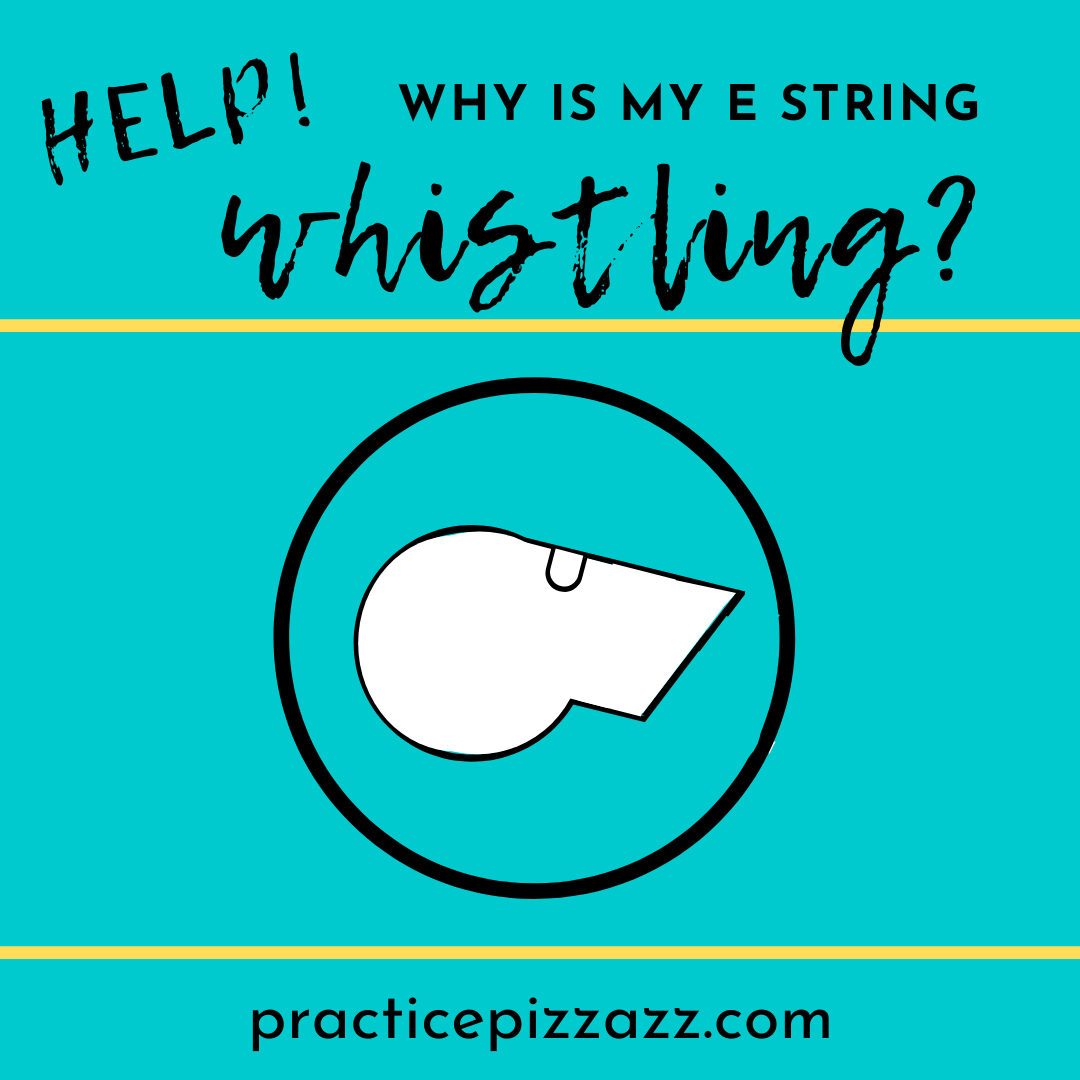How to Fix a Whistling Violin E String
If you’ve ever had a whistling E string, you’ve known that eerie feeling of moving your bow but no normal sound coming out. There are lots of reasons that an E string whistles (or squeaks or ghosts), but fixing the root problem isn’t really that intuitive. I wrote this post to help you troubleshoot a whistling violin E string.
And if you haven’t yet experienced a whistling violin E string, don’t worry–you will! It happens to every violinist sooner or later. Being prepared to fix the problem will help you not get frustrated with the sound so high that only mice can hear.

When Does a Violin E String Whistle?
Whistling happens most often when going from the A string to the E string, including when you roll a chord up. Follow these steps in order to troubleshoot a whistling E string. We’ll troubleshoot technique questions first, then move to violin maintenance questions.

Technique Questions to Ask:
1. Is any part of my first finger on the left hand accidentally touching the E string?
You might be inadvertently playing a harmonic. This is an easy problem to fix—just move your first finger out of the way of the E string.
2. Am I applying enough pressure with the bow?
Skating on the string instead of getting enough pressure and weight can lead to a whistling violin E string. Try digging in with the bow a little extra to prevent a whistling E or even stop it mid-whistle. Or you can try lightening up if you’re digging in too much.
3. Can I change my bow speed?
Bowing at a fast speed is more likely to get an E string to whistle than bowing at a slower speed.
4. Am I playing too far away from the bridge?
Try moving your bow closer to the bridge.
Some violins just squeak or whistle on the E string more than others. If your E string still whistles after troubleshooting your technique, then move on to questions about maintenance.

Maintenance Questions to Ask:
1. Do I have excess rosin on the strings?
Follow the instructions in this post for help wiping extra rosin off the strings.
2. Does my bow have the right amount of rosin?
3. Can I try a higher quality rosin?
If your rosin is cheap, try splurging a bit and getting a rosin that’s stickier. If you use a light-colored rosin, try a darker-colored one.
I like this rosin:
4. When was the last time my bow was rehaired?
A whistling violin E string might be your bow crying out for a rehair.
5. Is my E string old?
Strings start to go “false” after a while, and the E string is usually the first to fall victim.
6. If my E string is new, is it a low-quality string?
7. Can I try a different type of E string?
I’ve found that gold E strings are more likely to squeak. (They look cool, though. A violin with a golden E string reminds me of a pirate with one golden tooth.)
Sometimes, changing from a wound E to a steel E or vice versa can get rid of the whistling. There are even aluminum strings specifically marketed as a “Non-Whistling E String.”
If none of these ideas works, then take your violin to your luthier to get the sound post adjusted.









